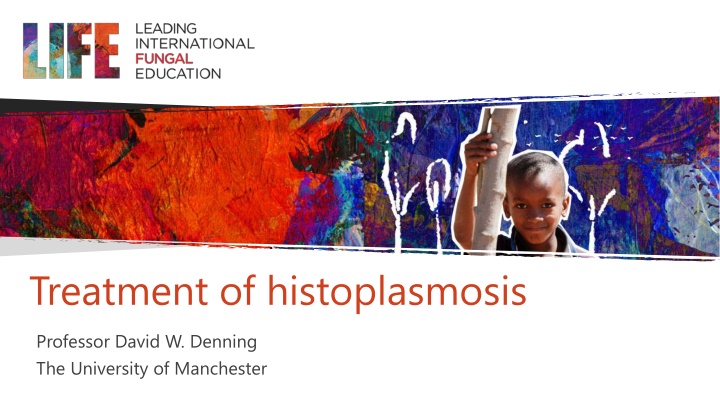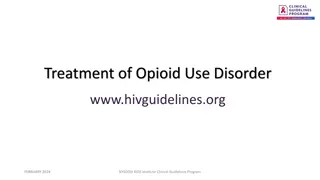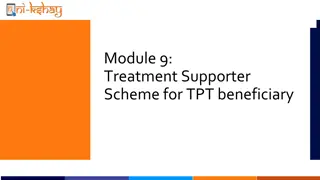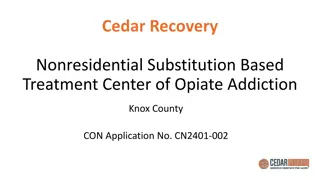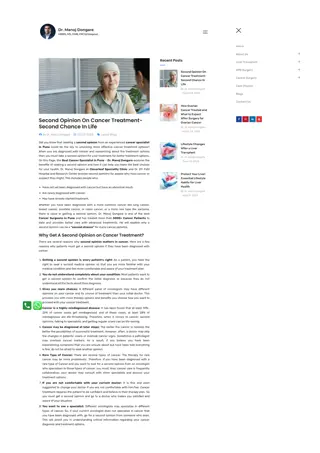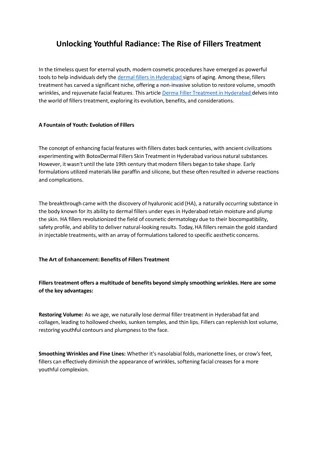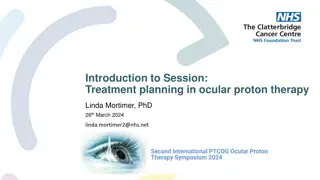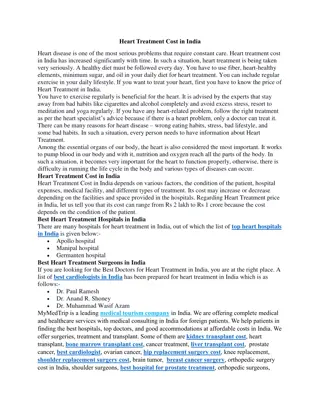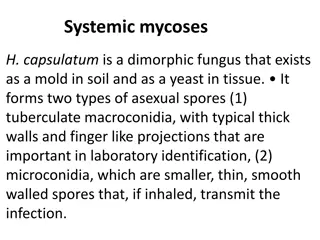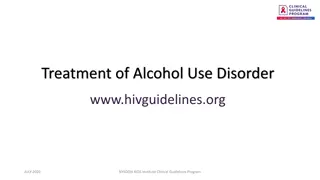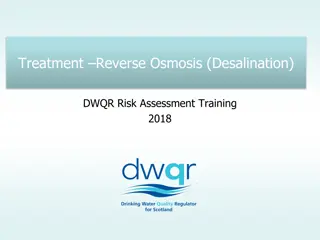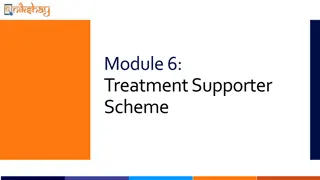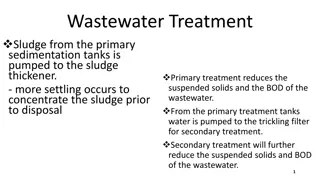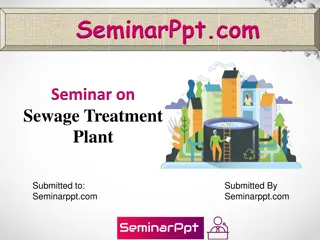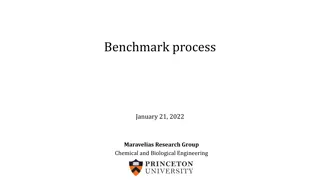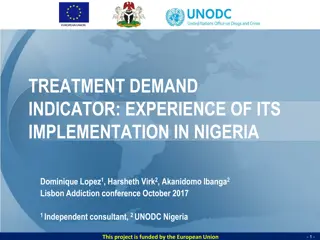Treatment of Histoplasmosis Overview
Antifungal treatment guidelines and outcomes for patients with histoplasmosis, distinguishing between manifestations that require treatment, treatment options for acute pulmonary and chronic disseminated cases, and recommendations for progressive disseminated histoplasmosis.
Download Presentation

Please find below an Image/Link to download the presentation.
The content on the website is provided AS IS for your information and personal use only. It may not be sold, licensed, or shared on other websites without obtaining consent from the author.If you encounter any issues during the download, it is possible that the publisher has removed the file from their server.
You are allowed to download the files provided on this website for personal or commercial use, subject to the condition that they are used lawfully. All files are the property of their respective owners.
The content on the website is provided AS IS for your information and personal use only. It may not be sold, licensed, or shared on other websites without obtaining consent from the author.
E N D
Presentation Transcript
Treatment of histoplasmosis Professor David W. Denning The University of Manchester
Objectives Understand the treatment goals for histoplasmosis Distinguish between manifestations that usually require treatment and those that do not Be aware of treatment outcomes in histoplasmosis
Overview Antifungal treatment is always recommended for immunocompromised patients with histoplasmosis Acute histoplasmosis resolves without treatment in most immunocompetent healthy individuals, in whom treatment is usually not recommended BUT if immunocompetent patients are exposure to large inoculum of Histoplasma spp. and are highly symptomatic, antifungal treatment is advised Early initiation of treatment is associated with shortened duration of illness and halts progression to persistent disseminated histoplasmosis and save lives in very ill patients
Which manifestations to treat USUALLY or ALWAYS treated Usually NOT treated Acute pulmonary histoplasmosis (usually) Acute pulmonary histoplasmosis (sometimes) Pulmonary nodules Chronic pulmonary histoplasmosis (always) Mediastinal histoplasmosis Progressive (Acute) disseminated histoplasmosis (always) Lymphadenopathy Adenitis Fibrosis Presumed ocular histoplasmosis Chronic disseminated (adrenal, colonic, oropharyngeal etc) (always) Wheat et al. Infect Dis Clin N Am. 2016;30:207-227
Acute pulmonary histoplasmosis Treat Don t treat Moderate-severe disease Diffuse bilateral infiltrates on chest imaging Immunosuppression Asymptomatic patient Mild disease Focal infiltrates on chest imaging Rationale: Mild acute pulmonary histoplasmosis is self-limiting Treatment options: Amphotericin B for 1-2 weeks followed by itraconazole for 12 weeks Itraconazole alone for 12 weeks in mild to moderate disease
Progressive (acute) disseminated histoplasmosis Treatment should be continued for at least 12 months and until antigenaemia and antigenuria have resolved Treatment goals Early and effective antifungal therapy Control of underlying immunodeficiency Adjunctive interferon gamma is recommended in patients with IL-12 and IFN- deficiency Hospitalised patients Liposomal amphotericin B for 2 weeks Then itraconazole for at least 1 year Check drug interactions Plasmapheresis / rituximab for adult immunodeficiency syndrome Milder cases or in non-severely immunocompromised patients Itraconazole for 12 months Note Liposomal AmB has a better response rate and lower mortality than conventional AmB Alternatives to itraconazole includes voriconazole, posaconazole and isavuconazole Beware adrenal insufficiency Hage et al. Semin Respir Crit Care Med. 2015;36:729 745 Vinh DC. Lancet Infect Dis. 2011;11:780-92
Chronic disseminated histoplasmosis Treatment options Benefits of antifungal treatment Itraconazole 200-400mg daily for 6-12 months, unless already given empirical rifampicin for adrenal tuberculosis Amphotericin B (preferably liposomal), if pretreated with rifampicin or other major drug interaction Resolution of gastrointestinal lesions Possibility of adrenal dysfunction recovery Probably improved survival in those with adrenal masses and dysfunction Avoidance of later complications (i.e. gut stricture or dissemination if immunocompromised) Precautions Pro-actively address adrenal dysfunction to avoid cortisol deficiency and Addisonian crisis Ensure itraconazole levels are therapeutic
Chronic pulmonary histoplasmosis Treatment options Benefits of antifungal treatment Itraconazole for 12-24 months Induction of clinical and radiological remission Culture conversion Improved survival Precautions Ensure itraconazole levels are therapeutic Chest imaging follow-ups: 4- or 6-monthly Relapse is common following treatment ~15% Watch for primary lung cancer during or after treatment
Treatment for common histoplasmosis syndromes Adapted from Hage et al. Semin Respir Crit Care Med. 2015;36:729 745
Outcomes Response to therapy 60-80% Relapse occur in ~50% of responders Life-long therapy is recommended for patients with relapse Mortality 100% if untreated CNS disease, ~80% (<5% with early diagnosis and early appropriate treatment) HIV and disseminated, ~20-40% Other manifestations, 0-10% Wheat et al Infect Dis Clin N Am. 2016;30:207-227 Haynes et alJ Infect Dis. 2002;185:223-8
Summary Itraconazole is the first line of therapy for the treatment of histoplasmosis Liposomal amphotericin B (preferable to deoxycholate ) is recommended for initial management of hospitalised patients and is associated with improved outcome Be alert to and check for adrenal insufficiency, especially if rifampicin has been given Treatment of disseminated disease should continue for at least 12 months and until antigenaemia and antigenuria have resolved Alternative triazoles (voriconazole, posaconazole and isavuconazole) can be used for salvage therapy
